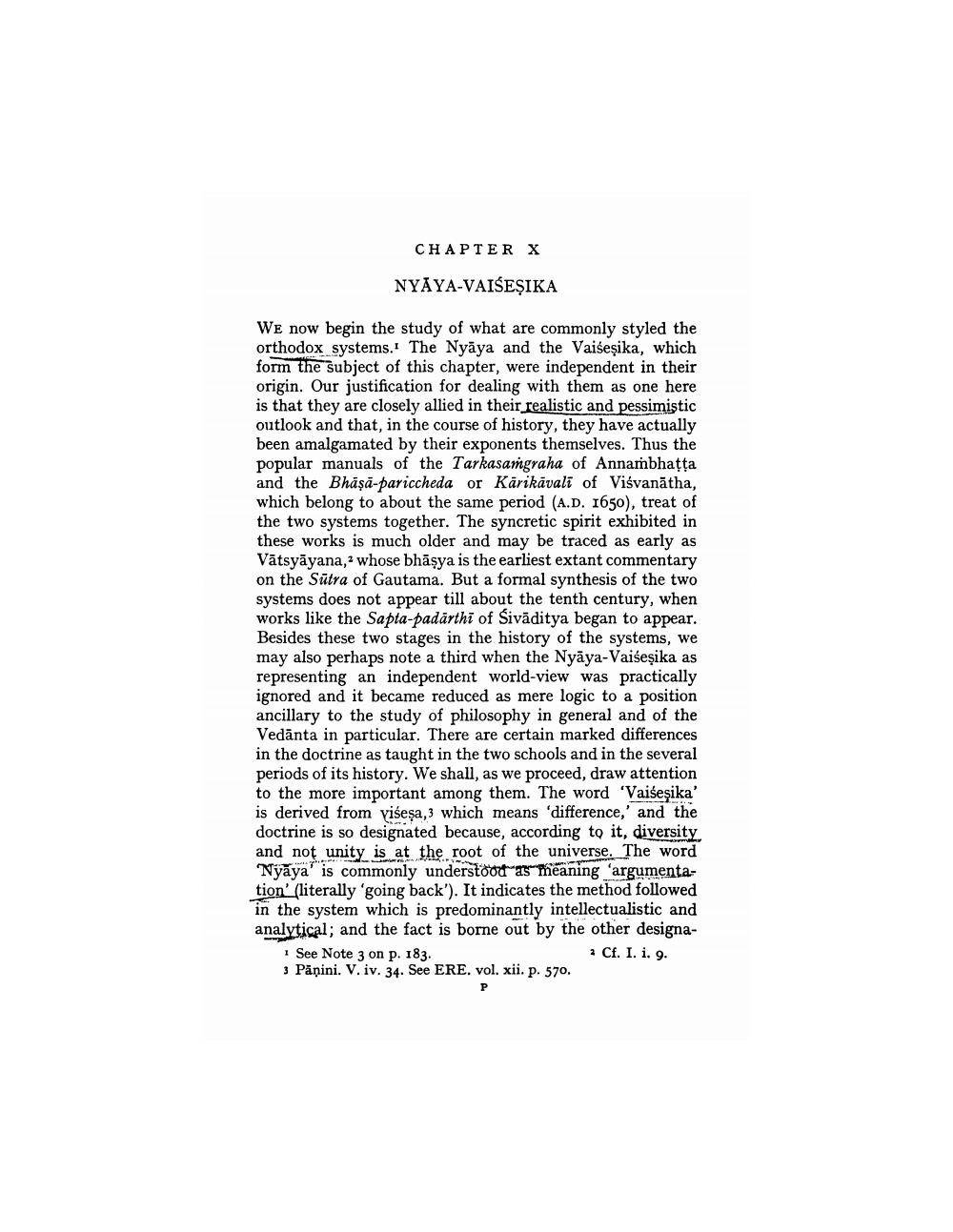________________
CHAPTER X
NYAYA-VAISEŞIKA
We now begin the study of what are commonly styled the orthodox systems. The Nyāya and the Vaišeşika, which form the subject of this chapter, were independent in their origin. Our justification for dealing with them as one here is that they are closely allied in their realistic and pessimistic outlook and that, in the course of history, they have actually been amalgamated by their exponents themselves. Thus the popular manuals of the Tarkasangraha of Annambhatta and the Bhaşā-pariccheda or Karikávali of Visvanātha, which belong to about the same period (A.D. 1650), treat of the two systems together. The syncretic spirit exhibited in these works is much older and may be traced as early as Vātsyāyana, whose bhāşya is the earliest extant commentary on the Sūtra of Gautama. But a formal synthesis of the two systems does not appear till about the tenth century, when works like the Sapta-padārthi of Sivāditya began to appear. Besides these two stages in the history of the systems, we may also perhaps note a third when the Nyāya-Vaisesika as representing an independent world-view was practically ignored and it became reduced as mere logic to a position ancillary to the study of philosophy in general and of the Vedānta in particular. There are certain marked differences in the doctrine as taught in the two schools and in the several periods of its history. We shall, as we proceed, draw attention to the more important among them. The word 'Vaiseşika' is derived from visesa, 3 which means 'difference,' and the doctrine is so designated because, according to it, diversity and not unity is at the root of the universe. The word Nyāya' is commonly understood as meaning 'argumentation' (literally 'going back'). It indicates the method followed in the system which is predominantly intellectualistic and analytical; and the fact is borne out by the other designa1 See Note 3 on p. 183.
1 Cf. I. i. 9. 3 Pāṇini. V. iv. 34. See ERE. vol. xii. p. 570.




